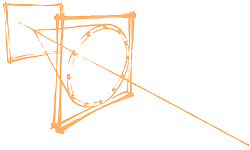Orateur
Dr
Ichiro Adachi
(KEK)
Description
Highly transparent silica aerogel has been developed for
Cherenkov radiator in a RICH counter to be installed in the Belle-II end-cap apparatus.
In conjunction with necessity to use multiple aerogel radiator layers for the RICH
focusing scheme pioneered by our group,
the optical improvement of silica aerogel with higher refractive index range around $n=$1.055$¥sim$1.070
has been intensively carried out since the previous RICH workshop.
Generally optical properties of aerogel tiles become poorer as refractive indices go higher, especially
at $n>1.055$.
This was one of our concerns as the higher index radiator tile has to be located in the downstream
in the focusing multiple aerogel radiator layers, where most of Cherenkov photons pass through
and therefore higher transparency was required.
New aerogel fabrication method, known as "pin-hole drying(PD)" method, to keep its quality in the region of $n>1.055$ was
invented. In this method, special care is taken in the aging period of alcogel tiles after the sol-gel process.
Based on this technique, optical transparency for $n>1.055$ sample was remarkably improved.
For $n=$1.060, we achieved a transmission length of about 50 mm at a wave-length of 400 nm,
which is two times longer compared to the previous tiles.
The aerogel tile size is another important parameter for a realistic application.
By optimizing various conditions, not only in the synthesis process but in the
supercritical drying procedure,
we have successfully produced a large sample with dimensions of 180$¥times$260$¥times$20 mm$^3$,
where optical properties are of the same level as in the case of the smaller ones.
New aerogel samples were used as radiators in a RICH prototype to evaluate performance
in a test beam experiment done in November 2009 at KEK.
The obtained photoelectron yield with new samples was
2.5 times higher than that with the old ones by the previous method.
In this contribution, our R¥&D on aerogel improvements will be given.
| Please indicate "poster" or "plenary" session. Final decision will be made by session coordinators. | poster |
|---|
Author
Dr
Ichiro Adachi
(KEK)

